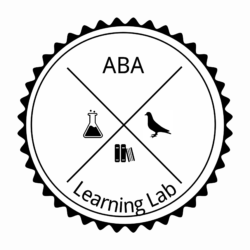Jacob Beduna, M.A., BCBA, contributing BCBA at www.StudyABA.com
As a contributing BCBA® at www.StudyABA.com, an exam prep website, I have helped thousands of people pass the BCBA certification exam. The number one question we get asked on the website is, “What is the best way to prepare for the exam?” After speaking with my fellow behavior analysts, I’ve created a list of 6 tips and strategies that were considered most helpful for us. Please note that while these tips and strategies may be helpful for many test-takers, others may benefit from completely different study strategies. Please also note that www.StudyABA.com is not affiliated with the BACB®. In this article, I will be sharing information the BACB has made publicly available, as well as tips and strategies that 30+ behavior analysts have shared with me over the years, in an organized and comprehensive fashion.
1. Understand the structure and content of the exam.
Preparing for the exam can feel daunting at times. I once had a supervisee tell me that it was like studying to go on the TV show ‘Jeopardy’. Although comical, I had to disagree with her because the BACB tells you what to study to prepare for the exam. The BACB’s 4th Edition Task List offers a detailed breakdown of what content the exam covers. Study every single task on this list! On the certification exam, there are 150 questions taken from 11 content areas, in addition to 10 ungraded pilot questions (160 questions total). On the certification exam, you will not be made aware which content area each question comes from, or whether they are “real” questions or ungraded pilot questions.
While the BACB states that you are not specifically tested on the terms and definitions found in the “Foundational Knowledge” area of the task list, it will still be important to know these as they can help you determine the correct answers. You’ll also want to spend a considerable amount of time studying the BACB’s Code of Ethics, as there will be at least 20 questions related to ethics on the exam.
2. Create a study plan that works best for you.
Finding a study plan that works best for you depends on many factors. However, as a general rule we recommend taking two full-length mock exams before you begin studying so that you can gain a baseline score and determine which content areas of the BACB’s Task List you should focus most of your time and energy on. Then we recommend studying the entire BACB Task List and the BACB Code of Ethics, while focusing strongly on the areas you received the lowest scores on your baseline exams. Strategies for mastering the material covered on the task list include, but are not limited to: taking quizzes that focus on certain content areas, making flashcards of key terms, joining study groups, reading Applied Behavior Analysis (Cooper, Heron, & Heward, 2007) and taking the quizzes at the end of each chapter, consulting with supervisors and professors, creating a study guide, etc.
When you are 1-2 weeks away from taking the certification exam, we recommend taking two more full-length mock exams to see how your scores have improved from your baseline exams. At www.StudyABA.com, over 99% of the people who pass our mock exams pass the real certification exam. There are a handful of other sites that offer practice exams as well. When shopping around for practice exams, it will be important for you to look for data showing how similar their exams are to the actual certification exam. We recommend taking practice exams from as many websites as you can. The more practice exams you take, the more fluent you become with the content that the certification exam covers.
It will be essential for you to practice your pacing during these practice exams to ensure you do not run out of time when taking the certification exam. You will have 4 hours to complete the real certification exam, which equates to 90 seconds per question.
Finally, we recommend focusing most of your remaining time on the content areas in which you received the lowest scores on your final two full-length exams.
3. Make the most of the final hours leading up to the exam.
Do not stay up all night studying the night before the exam. A full night’s rest will likely be more beneficial to you than studying a couple extra terms, since a lack of sleep could result in poorer performance in all areas.
On the day of the exam, eat a full breakfast and try to remain calm. You can try to touch up on a few areas, but we recommend trying not to “overwork your brain” since you will be taking a 4-hour test later that day. Wear clothes that will help you stay comfortable while sitting in a chair for 4 hours. Try not to wear clothes that will be uncomfortable or distracting. Wear warm clothes if you get cold easily. Wear sweatpants if jeans are uncomfortable. Wear dress clothes if they make you feel confident. Keep in mind that this is not a fashion show. The BACB will not score your test any differently based on what you wear to the testing center, so wear whatever makes you feel comfortable.
The testing center tells you to arrive at least 30 minutes before your exam is scheduled, or you may not be able to take the exam. When you arrive, the testing center will confirm your identity by asking for your identification, taking a picture of you, and scanning your fingerprints. You will get a locker assigned to you and you will be given a key. You will be asked to empty out your pockets and put everything in the locker except for the clothes on your back.
The testing center staff will then sit you down at a computer and hand you a fine-tip marker and a double-sided laminated paper to take notes on. The 4-hour timer will start as soon as you sit down at your computer.
4. Rate your level of confidence for each question.
When you sit down to take the exam, start out by writing 1-160 on your laminated paper. Make a mark at #40 that says “1-hour”, a mark at #80 that says “2 hours” and a mark at #120 that says “3 hours”. This way you can keep track of your timing and can determine whether you have plenty of spare time or if you need to pick up the pace. You can also write out acronyms, diagrams, definitions, or anything else you think will help you on the exam.
Go through each question in order, selecting the answer you believe is correct. After you select an answer to a question, mark your laminated paper to indicate the level of confidence you have in your answer:
| Symbol | Meaning |
| + | You are 100% sure your answer is correct. |
| * | You feel good about your answer, but not 100% certain. |
| / | You are fairly unsure of the correct answer, but may be able to determine the correct answer later. |
| – | You have no idea what the correct answer could be. |
NEVER leave a question blank when going through the first time. Even if you have no idea what the correct answer is, make your best guess by eliminating the bad answers first. By doing this, if you run out of time you at least have some answer put down for that question. When a question is left blank, it is automatically marked incorrect. Even if you completely guess the answer, you have a 25% chance of getting it correct.
Many people say that questions can sometimes come down to two possible correct answers, with one being “more correct” than the other. Read through every answer option entirely before selecting your answer. As with all multiple-choice tests, some answer options may sound incorrect based on the first couple of words, but then turn out to be the correct answer.
When you have finished all 160 questions, you will be given a chance to review all of your responses. From here, you can click on each question number you want to go back and review, based off of what you marked on your laminated paper. For example, you can click on question #99, rather than clicking the left arrow 61 times to scroll to that question. This review page will also show you if any questions were left unanswered. We recommend going through the questions that you felt like you were on the right track with (the questions marked with a question mark), followed by the questions you felt confident about but weren’t 100% sure on (the questions marked with a checkmark), followed by questions you had no clue on (the questions marked with an X).
5. Take a break during the exam (if time allows).
You may start to get sidetracked or feel a little “out of it” from staring at the computer screen for so long. Our single-best piece of advice is to take a break when you become overwhelmed or when you begin to lose concentration. You will need to raise your hand and someone will escort you out of the testing room. Get a drink, use the restroom, do jumping jacks, walk around for a minute, etc. “Give your brain a break” from the stress. Be aware that your timer does not stop, so these breaks count against your 4-hour time limit.
6. Remain calm and confident.
Use the knowledge you have acquired over the years to answer each question carefully and confidently. If you don’t know the answer to a question, don’t get hung up on it. Remain calm, select the answer you think is best, and mark it for review. Then move on to the next question without shifting your focus back to the question you were unsure of. Remember, the current question you are on will need 100% of your focus.
Stay encouraged even if you feel like you are doing poorly on the exam, as this is common even amongst people who end up passing the exam. You deserve to feel confident! It is no fluke that you are sitting for this exam, as you have met the same requirements as everyone else. You can do this!
On behalf of myself and my colleagues, we wish you the best of luck on the certification exam and look forward to having you as a BCBA® colleague soon!
*For practice exams and other helpful resources, please go to www.StudyABA.com.
Disclaimer:
- If instructions, policies, or procedures given to you by the BACB or the Pearson VUE testing centers differ from what you’ve read on this page, give priority to those instructions and disregard ours. Procedures and policies may change over time and may vary based on your testing location.
References
Cooper, J. O., Heron, T. E., & Heward, W. L. (2007). Applied Behavior Analysis. (2nd edn.). Englewood Cliffs, NJ: Prentice Hall.


You made a really good point when you mentioned that the BACB will require you to study ethics, as there will be twenty ethics related questions. My cousin is interested in becoming an RBT, so she’ll need to take the BACB. These tips will help her out, so thank you for sharing them.
Thank you for the above info! Where can I get a copy of the ethics code?